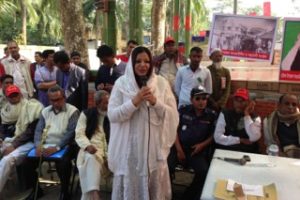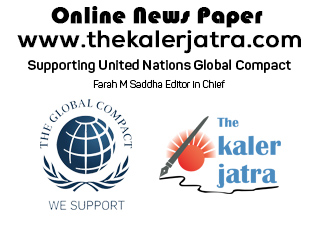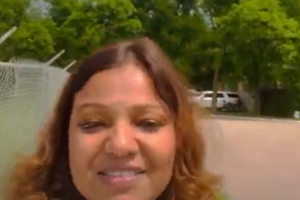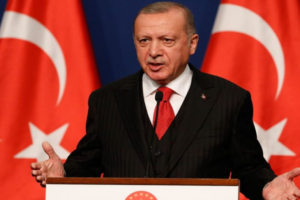It was in early March when the spent warhead of a cluster munition rocket landed next to Yurii Doroshenko’s home in eastern Ukraine, having dispensed its lethal bomblets over his village.
“They were shelling and it hit the street,” he said.
These types of internationally banned weapons have been repeatedly used by the Russian military since it invaded Ukraine in February. Human rights groups have denounced their use. Western leaders have linked their presence to a bevy of war-crimes allegations leveled at Moscow.
But the cluster munition that landed to next to Doroshenko’s house was not fired by Russian forces. Based on evidence reviewed by The New York Times during a visit to the area, it is very likely to have been launched by the Ukrainian troops who were trying to retake the area.
Nobody died in that strike in Husarivka, an agricultural hamlet surrounded by wheat fields and natural-gas lines, though at least two people were killed as Ukrainian forces shelled it for the better part of month, targeting Russian forces.
As the war approaches its eighth week, both sides have relied heavily on artillery and rockets to dislodge each other. But the Ukrainians’ decision to saturate their own village with a cluster munition that has the capacity to haphazardly kill innocent people underscores their strategic calculation: This is what they needed to do to retake their country, no matter the cost.
Cluster munitions — a class of weapon comprising rockets, bombs, missiles, mortar and artillery shells — split open midair and dispense smaller bomblets over a wide area. The hazard to civilians remains significant until any unexploded munitions have been located and properly disposed of by experts.
The Convention on Cluster Munitions, which took effect in 2010, bans their use because of the indiscriminate harm they can cause to civilians: Humanitarian groups have noted that 20 percent or more of antipersonnel submunitions fail to detonate on impact, yet they can explode later if they are picked up or handled.
More than 100 nations have signed the pact, though the United States, Ukraine and Russia have not.
“It’s not surprising, but it’s definitely dismaying to hear that evidence has emerged indicating that Ukraine may have used cluster munitions in this current conflict,” said Mary Wareham, advocacy director of the arms division at Human Rights Watch. “Cluster munitions are unacceptable weapons that are killing and maiming civilians across Ukraine.”
An adviser to the Ukrainian armed forces and the Ministry of Defense declined to comment.
Russian troops had seized Husarivka from Ukrainian units in the first few days of March, occupying buildings on its outskirts and near its centre. The 220-millimeter Uragan artillery rocket that landed near Doroshenko’s home — fired from a truck-mounted launcher many miles away — struck on either March 6 or 7, said Doroshenko, the town’s informal leader.
By that point, the village was well under Russian control.
Throughout the occupation, Ukrainian forces incessantly shelled the Russian troops there, and at least two of the same type of cluster munition were lodged in a field by Doroshenko’s home, just a few hundred yards away from the Russians’ makeshift headquarters in an abandoned farm workshop.
The rockets fell around a small neighborhood of a dozen or so single-story homes interspersed with small gardens.
During a visit to the property and Doroshenko’s street Thursday, Times reporters collected metal fragments left over from the detonation of antipersonnel munitions that had been released by artillery rockets. The target was most likely the Russian army presence there.
As the rockets neared the farm, their warheads — probably carrying 30 antipersonnel bomblets apiece — would have separated from the weapons’ solid rocket motors, breaking open and casting their deadly cargo across the neighborhood.
These small munitions each contain the equivalent of about 11 ounces of TNT, slightly less than twice as much as a standard hand grenade.
The attack on the Husarivka farm appears to be the first verified use of a cluster munition by Ukrainian troops since the Russian invasion began Feb 24. In 2015, Ukrainian forces used cluster munitions during the opening months of their war against Russian-backed separatists in the country’s east.
When confronted with the prospect that the Ukrainian military had shelled his village with cluster bombs, Doroshenko, 58, seemed indifferent.
“I don’t know,” he said. “The main thing is that after those rockets everybody comes out alive.”
The hazard posed by small undetonated munitions prevented Times reporters from closely examining all the weapons that landed. They visually verified from a distance two of the three rocket remnants as being Uragan cluster munitions, which leave behind the rocket’s nose cone followed by a long skeletal metal frame that held the bomblets together in flight.
On April 8, the Times verified that a similar kind of Uragan rocket, loaded with anti-vehicle land mines, was fired by Russian troops in a strike against the town of Bezruky, a suburb of Kharkiv, once Ukraine’s second-largest city.
Much has been said about the Russian shelling of Ukrainian towns — frequent artillery barrages that wound and kill residents and push the ones who remain in these contested areas into basements or shelters. The danger to civilians is no different under the barrels of Ukrainian artillery, as their forces desperately try to retake the parts of the country under Russian control.
Lubov Dvoretska, 62, lost her husband, Olexandr, during the shelling of Husarivka by Ukrainian forces at the end of March, just days before Russian troops retreated from there.
“Ones are shooting this way, others another way,” she recounted. “My God, everything is thundering. And on March 10, it was said that half of Husarivka had left for Chepelivka. Pack up and leave because it will get worse. And then I left.”
Dvoretska fled, but her husband, Olexandr, stayed behind to tend their livestock. Later, residents told her that Olexandr was injured in a mortar strike on March 22 and most likely died the next day.
“He was discovered dead in the house on the 23rd, and on the 24th they could barely reach me on the phone to notify me,” she said. “Just as he was, in the same clothes, he was buried inhumanly, like an animal.”
Another man, Volodymyr Strokov, was killed during the shelling March 22, residents said.
Before the war, Husarivka had a population of just over 1,000. It is now down to around 400, after hundreds packed what they could and left. Ukrainian forces retook the village around March 26. Now, the village — about 3 miles from the front line near the eastern city of Izyum — is attacked daily by both Russian artillery and aircraft, residents said.
Through tears, Dvoretska pointed to where her neighbors had buried her husband in a raised dirt grave in their backyard, marked with a homemade wooden cross.
“I never thought it would happen this way,” she yelled. “It never got in my head that I will be left alone at my old age. Alone.”





















